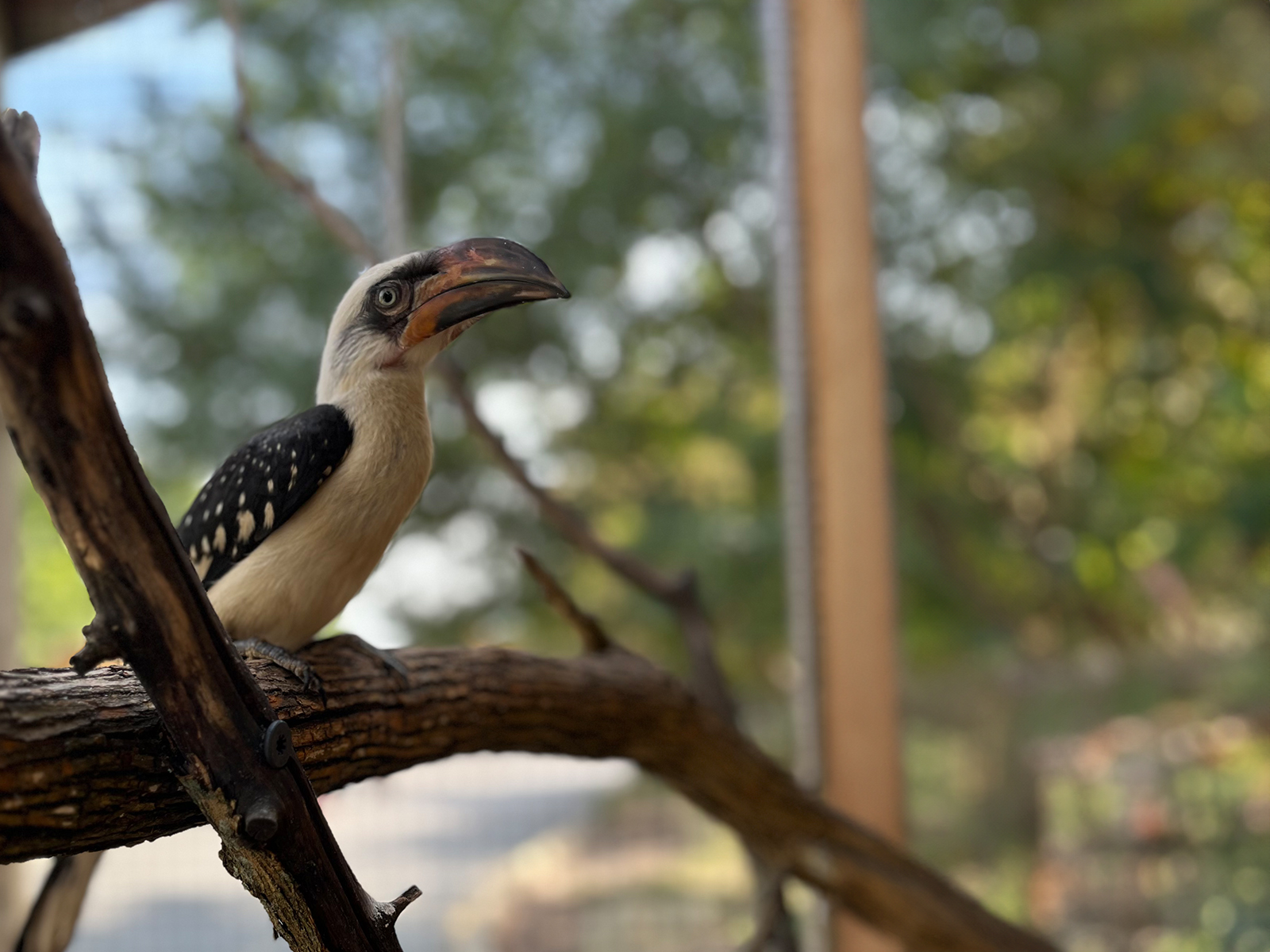Von der Decken’s Hornbill
Hornbills are characterized by their long, downcurved, and usually brightly colored bills.
Day of Creation: five
Biblical Kind: hornbill (includes all hornbill species except ground hornbills)
Status: least concern
Length 1.5–2 feet (0.5–0.6 meters)
Weight: 4–6 ounces (113.4–170.1 grams)
Habitat: scrubs and savannas of Somalia, Ethiopia, Kenya, and Tanzania
Lifespan: 10–20 years
Diet: seeds, fruits, insects, small vertebrates
Family Life: live in small flocks, but will pair up during courtship
Reproduction: 2–3 chicks hatch after 35–45-day incubations
Fun Facts
Von der Decken’s hornbills are sexually dimorphic. Females have black bills, while males have red bills with cream tips and black edges.
Hornbills are the only birds whose first and second neck vertebrae are fused, likely to support their large bills and strong neck muscles. They have long eyelashes and excellent vision. Unlike most birds, they can see the tips of their bills, which aids in precision while hunting.
Von der Decken’s hornbills have mutualistic relationships with dwarf mongooses, Africa's smallest mammalian carnivore. The mongooses will flush out food while the hornbills warn of approaching predators.
As is customary with hornbills, females and their eggs are sealed inside tree hollows with “cement” made of mud, droppings, and fruit pulp. Males will feed the females through a small opening for the duration of the incubation and the early days of the chicks’ lives. Once the chicks are older, the mother will break out and reseal the wall. Both parents will finish raising the chicks until they are ready to fly.
Von der Decken’s hornbills are playful, vocal, and intelligent. They are often observed dancing in the rain, sunbathing, toying with sticks, tossing leaves and other debris, bill wrestling, or jumping around each other.


